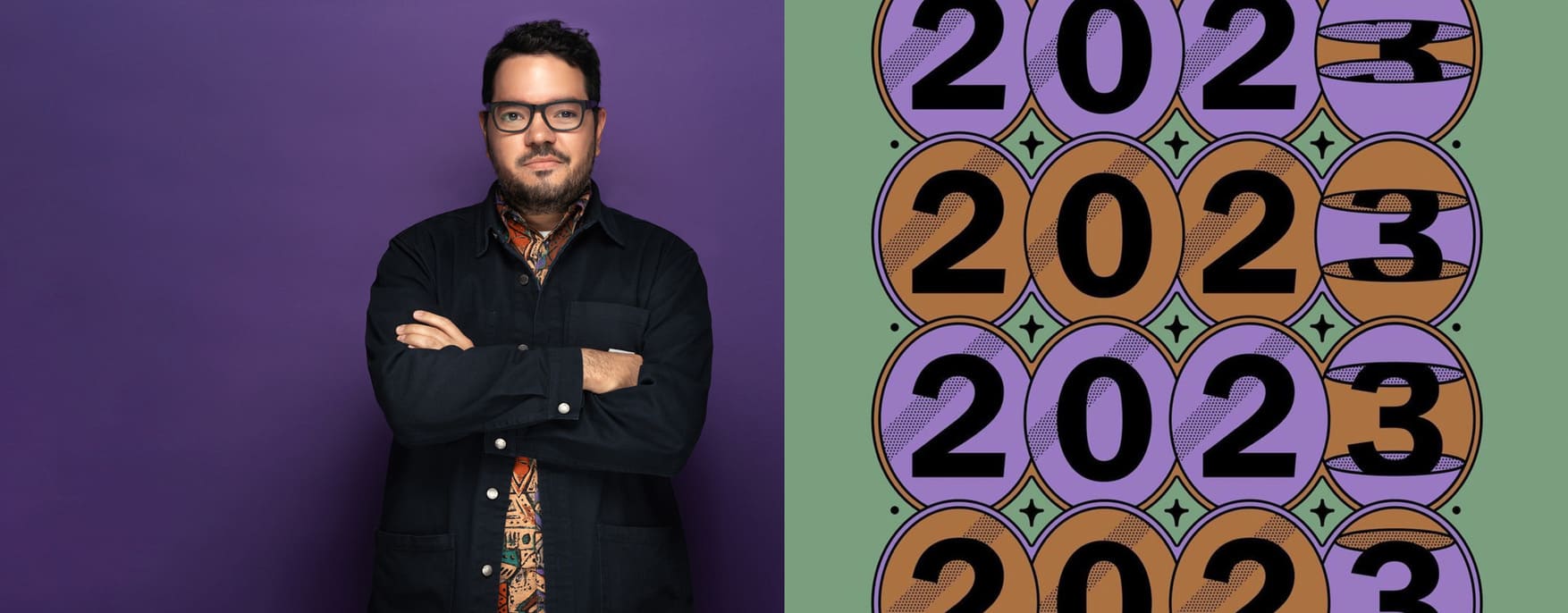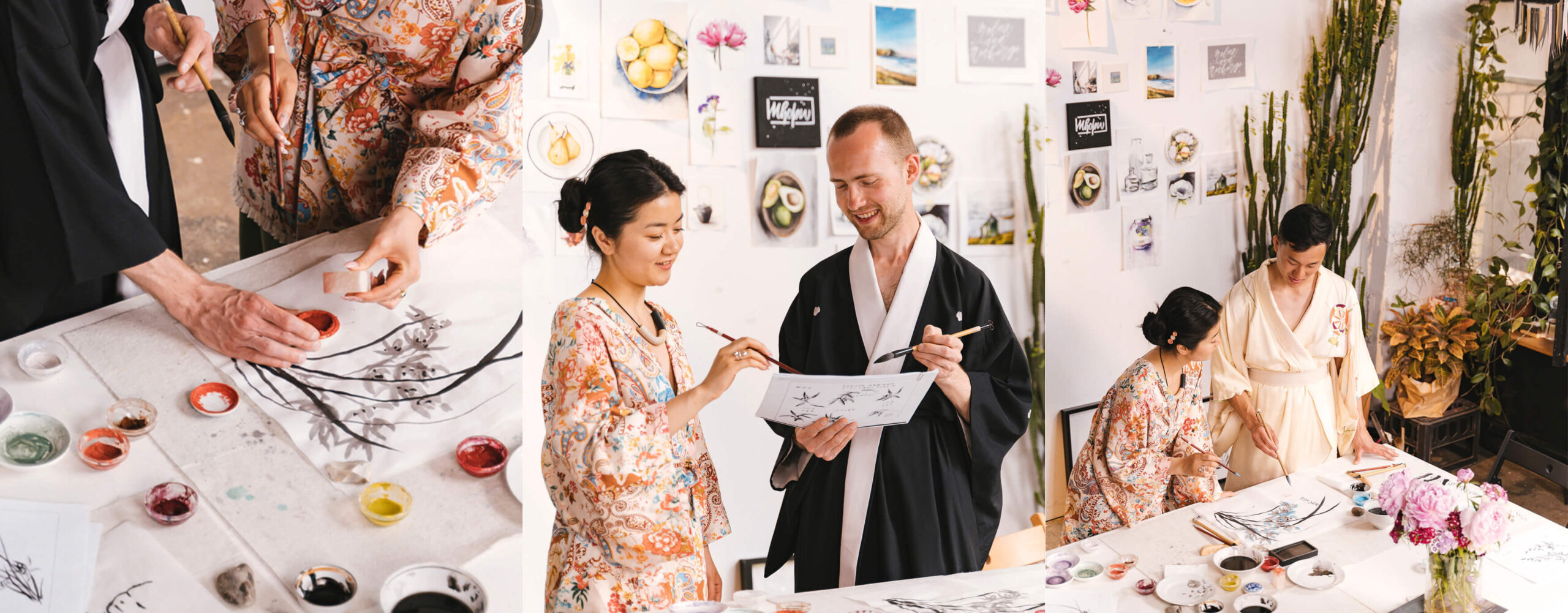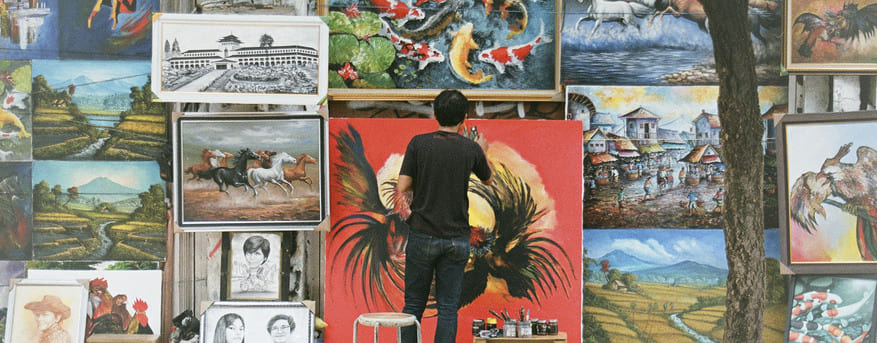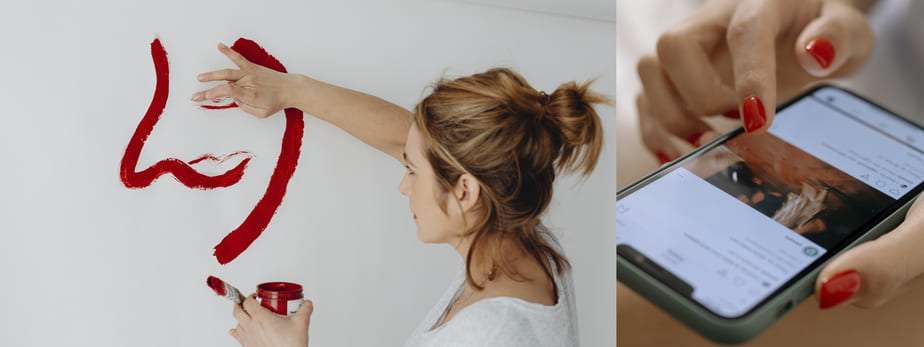Artist
“Practical positivism”, graffiti art and dial-up internet: how artist Luis Palencia learned to share his creations
Brooklyn-based, but Venezuela-born and raised, Art Director and designer Luis “Threz” Palencia has spent the last decade exploring the intersection of his visual references and contexts. He has stood at different ends of the creative industry working with graffiti and typography, digital illustrations, curating exhibitions, and branding strategies.
Now a household name Palencia has worked with the likes of comedian Hasan Minhaj and Nike Sports Wear, while following his creative impulses with projects like “The reggaeton coloring book”.
His aim is to help others expand their creativity and achieve their artistic goals. He is the host of the design-centered podcast “Deli & Graphics” and the mastermind behind “Cards for creatives”, a deck of illustrated cards with creative advice to “build your career and grow your business”.
Palencia sat down with ArtPlacer to talk about his creative process, how he has created an online persona that is true to himself, and how to lose the fear of failing and sharing your work with the world.
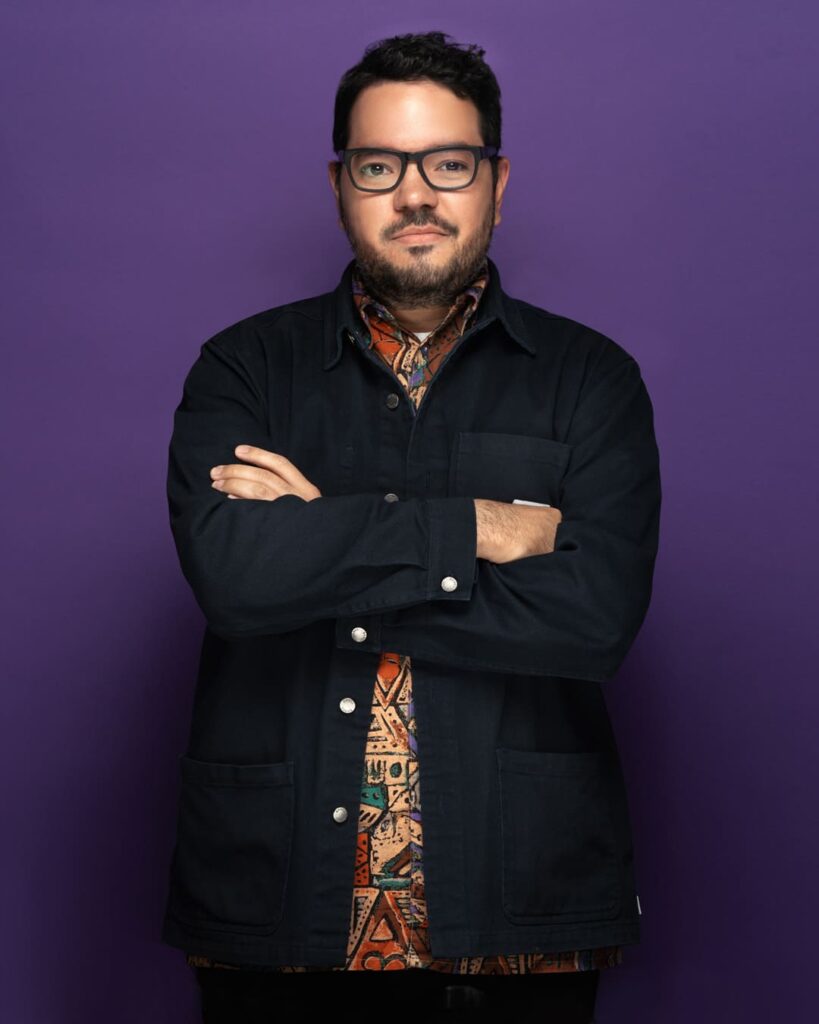
Palencia has found meaning in his work by focusing on helping others “create something greater”.
Can you tell us a bit about your background? What brought you to this point in your creative career?
It all started when I discovered graffiti. That led me to discover what I could offer, bring to the table, and create. First I discovered Hip Hop through a friend’s brother in school, he gave me a music mix with songs from Nas, Snoop Dog, and others, and told me “You’ve to listen to this”. That sound blew my mind. When I saw their videos with graffiti backgrounds, I needed to know more about it and started to investigate. I began to see some of it in Maracaibo (his native city, in Venezuela) and realized this was real, not something I only see in a video. I got obsessed and spent nights using dial-up internet to scroll through blogs about graffiti, and then I started to imitate it with paper and pencils. This was before starting college. At that point, I discovered the french collective 123Klan, one of the first to take graffiti from the walls to digital art. A friend in an internet forum told me that it was called a “vector” and advised me to download Adobe Illustrator. My life changed. From that moment on I start every day by opening that software. Design turned into my job, my hobby, and my passion. Is everything I do, an extension of myself.
You grew into the age of the so-called “brave new internet”, digital forums and blogs reigned in the early 00s. How much of your creative self was influenced by the internet and building a persona in these digital spaces?
When I started studying design, YouTube didn’t even exist. Everything was “trial and error”. I had to open every illustration software and click on every single button to see what happened and discover all the possibilities. There was no one there to tell me which path to take and I think that was beneficial in the end. I had a need to share what I was doing when things like Flickr and MySpace started popping up. I found a window to show my work and connect with people with the same interests. I understand this is hard for some people, some are afraid of rejection and some are obsessed with likes. They are part of a generation that has this imposed on them. I saw how social media grew, and the exposure I had helped my career. Sharing my work on the internet opened new opportunities. It wasn’t something I planned, I just adapted. I love living in this age when we have such access to information, to sharing and connecting with others.
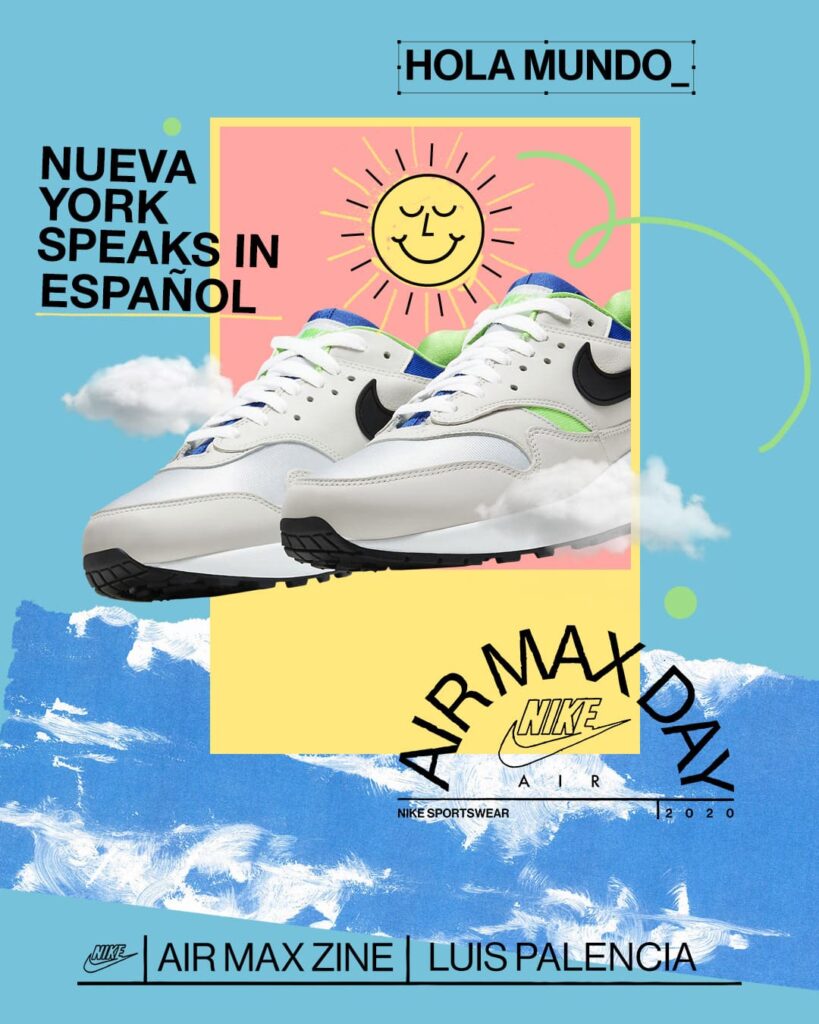
Air Max Day Zine – Palencia’s collaboration with Nike Sportswear.
What was the benefit of sharing your work in a digital space that erased all frontiers and allowed you to connect with people with totally different contexts from yours?
It gave me the chance to connect with many people and discover that the way design was approached in other places was not the same as what I saw in Venezuela, the way we did it, it was not something that was replicated elsewhere. Each culture and each country approaches it in a different way. This opened the doors to understanding other design styles and nurturing my work with them. I learned that everything is a remix. I can take something I like, how I see it, and how it originated in a certain country or subculture, and use it in my design to communicate my message. That was the benefit of talking with such different people. I started to see patterns in the visual culture of certain places. For example, here in New York, Blue Note practically defined the visual identity of Jazz music, and then, that was replicated in other countries by different record companies. I love noticing those “starting points” and how they travel the world and adapt to each culture according to its background. Exploring online has fed my curiosity and has helped me understand design as a tool for communication that has an impact on the visual culture of a place.
How do you apply these discoveries to your creative process?
Moving to New York helped me to reconnect with things that are natural for someone who was born in a Caribbean country, someone who is Latino. It was a new start in the way I approach what I do. I started to understand the visual culture I come from, the colors, the concepts, the patterns, and mix them up with what I’m discovering here. I’m lucky to live in a multicultural city. There is a connective thread: music, jazz, hip hop, mid-century design, and the way I address those references based on my background. Uniting opposite elements has been a helpful creative exercise. This has been a process of honoring what I grew up with and what I’m living today. Most designers try to develop a specific style and get lost in that search. How can you evolve when you only do one thing? I try to see it in a different way: every idea has its own unique energy. I conceive some things as a collage, and others as complete digital pieces. I can see something and think “this is an embroidery project”. When I reach the point where I can predict what I’m going to do, I know it is time to move on.
How do you lose the fear of “messing up” by following your own idea or feeling stuck doing something just because it is trendy?
It’s a trust in myself that I gained with time. There is a difference between having a voice and having a style. Your voice is what you want to say, what you believe and defend, and also what you can do in different ways. Once you know what you want to transmit you can define in which way it feels best to do it. I don’t have to use every tool that is trending to do my job. It’s good to try new things to understand how they work and how others do it, but that doesn’t mean that all tools are for you. When the UX Design boom started I questioned myself: was I staying behind? Was I not accepting these new waves? But then I realized I do other things that will also stand the passing of time. I just have to try it and discard it to understand what works for me and what I can offer as a creative person.
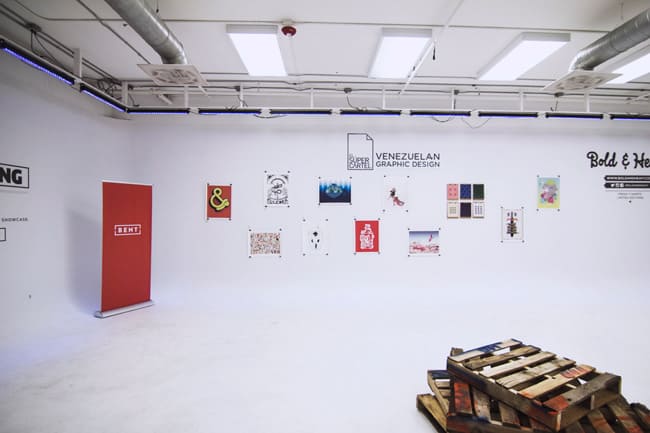
“El Super Cartel” curated exhibitions of Venezuelan illustrations and design.
“Everyone is a brand”, that’s today’s motto. How do you deal with the fear of being “too salesy” or the feeling of dissolving into trends?
Living in New York I started a personal challenge. Each Sunday I would sit down for two hours, to create four different images, 30 minutes dedicated to each one. I illustrated what I saw on the street, and what happened during the week and I shared it on social media. I did that for 72 Sundays in a row. By the 40th Sunday, the project started to get attention. I began receiving questions about how I do certain things or how I achieve a particular effect, and took the time to answer back. Sometimes I would even record a video explaining how to do it. I decided to follow up on these conversations and found out that most people didn’t complete their ideas. They said they couldn’t do it, didn’t have the skills or the tools, and those are all excuses. People get overwhelmed by what they are doing, they are afraid of the learning process. It gets frustrating. You have an idea but you can’t execute it, the technical aspect is not there yet. What you are not seeing is that there is a learning process that will take you there. I don’t think the world needs another design tutorial, I think people need to know how to lose the fear of sharing their work. Not showing your work says a lot about you, ironically, we are afraid of succeeding. My mission is to use social media and these digital channels to share the information I have collected, what I have lived and practiced, and things that I believe are important to pass on.
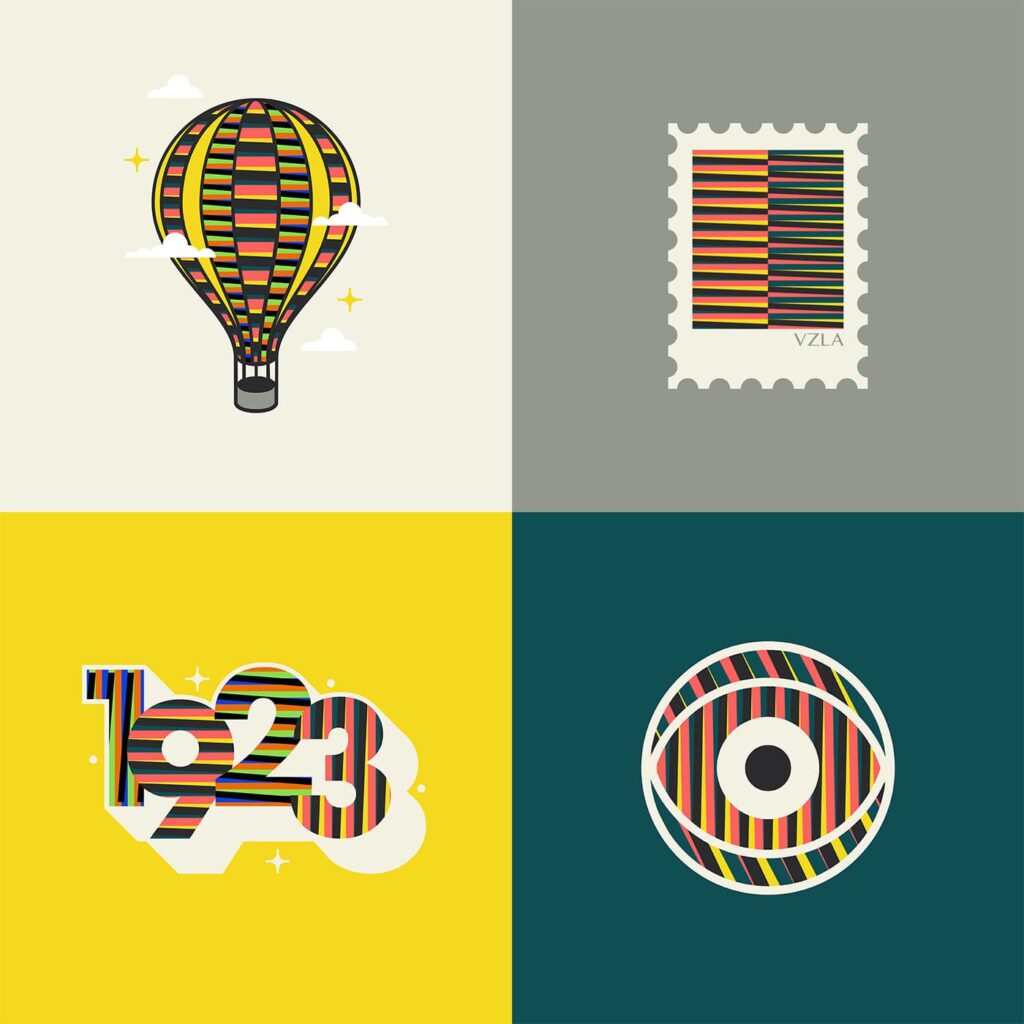
30 minutes graphics by Luis Palencia.
You found meaning in what you do. And It all started with a self-imposed challenge. What role do these exercises have in your work?
One of the biggest challenges creatives have is that it is easier to meet a deadline for others than it is to do it for themselves. We manage to fulfill other people’s deadlines but when it comes to us we say “this is a personal project, I can take care of it tomorrow, there is no rush”. I started to draw a limit with this challenge, I made it really specific: every Sunday, two hours, four images. It was my way to exercise, to share ideas, it was a sort of journal, and I challenged myself to do it even when I didn’t want to. I sat down and did it. That’s something that helped me build self-confidence.
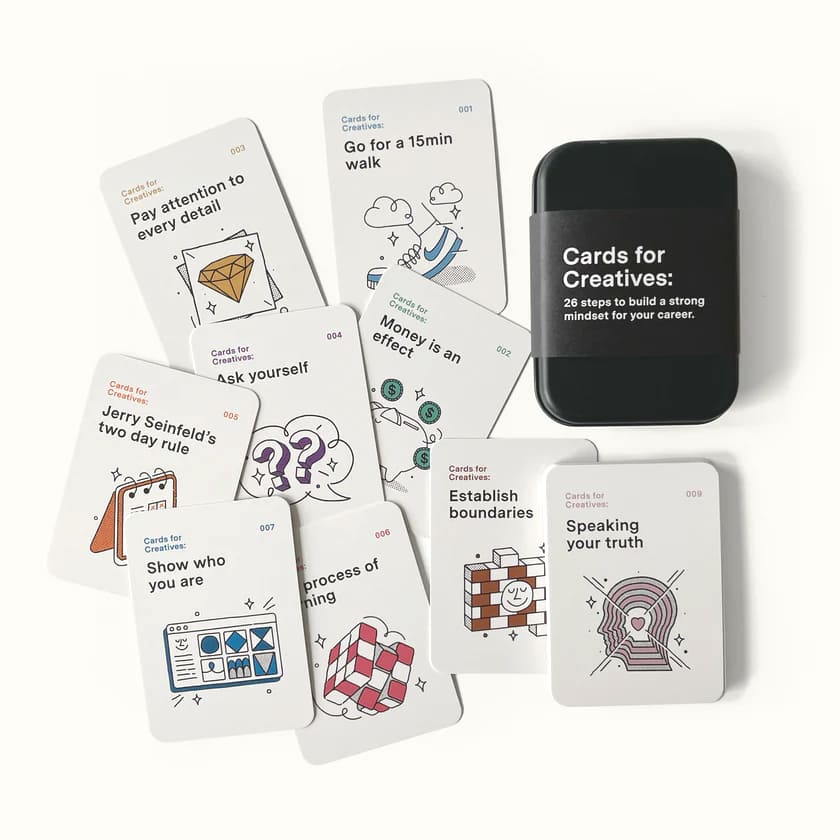
“Cards for Creatives’ ‘ is not a game, it is a creative approach to an accessible pep-talk to spark your creative process.
Did this challenge trigger what later came to be “Cards for Creatives”?
Without a doubt! This led me to learn a lot of things. I started a podcast and that challenged me to do bigger research to share my ideas. It got me involved in projects where I learned new skills. I wanted to give away all that knowledge I collected over that time, but I wanted to do it my way. I saw that I was locked in the box of being a “designer”, and when I got out of that structure I had the chance to explore new things like creating a product that had the same importance income-wise as any client. I believe in practical optimism. I see those exercises I made three years ago and I see the seed of my current way to approach illustration. It also taught me how to summarize and simplify ideas, and understand the importance of metaphors in illustrations.
What was your goal with this project? What did you want to achieve?
What I want is to give people access to helpful information. I made a lot of mistakes, I went through a lot of situations where I wished someone had told me “you could have done this differently”. My goal with these cards is to give creatives handy information, something they can have in their desk as a reminder of their ability to grow at creative and business levels. I want us all to win. A friend once told me “your wound is your niche”. And it is true, I didn’t have that support. Today my father is my number one supporter, but at the beginning, he struggled with understanding why I was up until 3 am doing an illustration on my computer. I have a wound of lacking that aid or not knowing how to find the data I needed. Everything I didn’t have, that’s what I want to provide to people.
Where did you find the motivation to create your own artistic path?
It was something beyond motivation, it was something I needed to discover about myself. I dropped out of college and after years of therapy I understood this was my way of showing “I could do it”. That was my fuel. I wanted to communicate something but, at the same time, I was an introvert. I finally found my voice in design. I want to create things, I want to try things. Today my motivation is connected to having accomplished what I challenged myself to do. That generates a feeling of respect toward me and my work.
I keep my motivation up by creating. It’s difficult to stay motivated when you hide your work for months. Sharing what I do takes me places passion could not. I have big goals like penning a book, but first I know I have to go through certain experiences and projects that will take me to that point. I also know I have to be willing to fail. Knowing this is my corner, my tools, pushes me to create things and help others create too.
Something that also keeps me motivated is feeling grateful. I feel lucky to be a person who makes a living out of what they love to do, from my talents. I’m blessed to say I have a mission. I’m grateful for having a mind that sounds logical and a body that follows my command.
Social media is full of success stories. How can a creator surrender to the idea of failing in order to learn or grow?
It’s impossible to not make a mistake. I believe there is something negative in keeping your ideas to yourself, it stays in your subconscious pushing to get out. I noticed that being so reserved with my work created a lot of pressure when sitting down to create something or exhibit it. You have been waiting for so long you want it to be perfect, but that doesn’t exist. When you start creating and publishing, you realize every idea is just a thought that was in your mind for a moment. People think there is a lack of new ideas, but the truth is, every time you share an idea with the world, another comes along. To me, that’s a call to let go and not take criticism as something personal. Feedback is not about you, it is about the idea, and that’s just the beginning in a long list of things we must learn.
Sharing your work on digital or hybrid spaces has been a constant in your career. How did you integrate this with your creative process?
Sometimes what I share is not even the final project, but what I learned from it. Mistakes I made. The small details. Those are the things I like to communicate and pass on. I rarely keep something to myself. I see the information I have and analyze if it works better as a video, a post, or a tweet. It is all about what’s the best way to communicate it.
Working in both digital and hybrid spaces has helped me understand what is possible and the reach an idea might have and how this defines the intention of the project. I have learned from the mistakes I made in both spaces and that’s what I want to share. My goal is to always create a sense of community. I like being part of a group of people that are helping each other to create something greater.
Editor’s note: This interview has been translated and edited for length and clarity.
